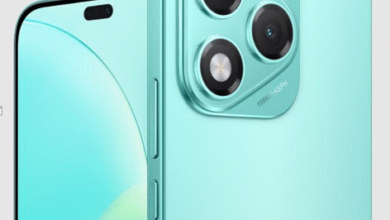How Bright Should a Smartphone Screen Be Outdoors?

Brightness is one of the most important aspects of a smartphone display when it comes to outdoor use. Whether you are reading a message under direct sunlight, watching a video while commuting, or using navigation during a trip, screen brightness determines how comfortably you can view content. The right level ensures that colors stay vivid, text remains legible, and details do not get lost in glare. With technology advancing, manufacturers are paying closer attention to this feature. Smartphones such as the HONOR X6c in KSA demonstrate how high brightness levels, paired with smart design, can transform the outdoor viewing experience.
Why Screen Brightness Matters Outdoors?
Defining Brightness in Smartphones
Brightness is measured in nits, a unit that indicates how much light the display produces. The higher the nits value, the brighter the screen. While 400 to 500 nits may feel adequate indoors, outdoor environments demand significantly higher levels to overcome sunlight. Modern smartphones often include high brightness modes that temporarily boost screen luminance for easier visibility. Devices like the HONOR X6c, with a 1010nits high brightness mode, ensure that even in intense daylight, users can comfortably read, scroll, and watch without straining their eyes.
The Impact on Everyday Tasks
Outdoor brightness plays a role in how effectively you handle daily tasks. Checking directions on a map, answering emails, or simply browsing social apps requires a screen that adapts to surroundings. Without enough luminance, users may need to tilt their device or seek shade, which interrupts workflow. A smartphone that maintains high clarity in daylight allows seamless transitions between indoor and outdoor environments. The HONOR X6c highlights this convenience by balancing strong brightness with smooth visuals on its 6.61-inch immersive display.
Reducing Eye Strain
Legibility outdoors is not just about convenience—it also affects eye health. When a display is too dim against bright backgrounds, eyes work harder to interpret content, leading to fatigue. A brighter screen reduces this effort, letting users engage comfortably for longer. Coupled with a 120Hz refresh rate, as featured in the HONOR X6c, the experience becomes smoother and less tiring. This combination shows how brightness interacts with other features to provide both comfort and functionality in outdoor settings.
See also: Different Metal Bending Techniques in Manufacturing
Balancing Brightness with Other Display Features
Color Accuracy and Clarity
Brightness alone does not define quality. A screen must also preserve accurate colors and sharp details at higher levels of luminance. Poor calibration can wash out tones when brightness increases. A well-designed display ensures that photos, videos, and documents look consistent under all conditions. The HONOR X6c’s design ensures vivid, clear visuals at 1010nits, so users can enjoy vibrant colors even when standing under direct sun. For tasks like editing photos or viewing media, this consistency makes the difference between usability and frustration.
Battery Efficiency and Brightness Control
High brightness levels can consume more power, but modern smartphones manage this with adaptive technologies. Automatic brightness adjusts the screen according to surroundings, balancing visibility with battery life. With a 5300mAh battery and 35W Turbo Charging, the HONOR X6c demonstrates how strong brightness can coexist with endurance. Even when boosting to high brightness outdoors, the device supports extended use without constant recharging. This synergy reassures users who rely on their phones throughout the day.
Screen Size and Outdoor Visibility
The relationship between brightness and screen size also shapes the viewing experience. Larger screens can reflect more light, requiring higher luminance to remain clear in outdoor conditions. At 6.61 inches, the HONOR X6c uses its high brightness mode to ensure that text, images, and videos maintain clarity across the entire display. This makes it suitable not only for casual viewing but also for more practical uses like reading documents or navigating maps during travel.

Practical Scenarios Highlighting Outdoor Brightness
Travel and Navigation
When traveling, smartphones often serve as primary tools for maps, translations, and ticket management. A bright screen ensures that navigation remains legible even under the midday sun. Imagine standing at a bus stop, scanning QR codes, or reading route details—brightness directly impacts ease of use. Devices like the HONOR X6c, with a screen tailored for outdoor readability, help travelers move confidently without squinting or searching for shade.
Photography and Videography
Taking photos or recording videos outdoors requires a screen bright enough to preview shots accurately. Without adequate luminance, shadows and highlights may appear unclear, making it harder to frame or adjust settings. The HONOR X6c pairs its 50MP dual camera with a bright, high-refresh-rate display, ensuring users see realistic previews. This connection between screen brightness and photography elevates the creative process, allowing better decisions on the spot.
Work and Communication On The Go
For professionals who use their smartphones outside, brightness influences productivity. Reading documents, sending emails, or joining video calls demands displays that remain visible despite glare. The HONOR X6c’s ability to maintain clear visuals at over 1000nits supports this workflow. Combined with smart AI features activated through its dedicated button, it allows seamless switching between tasks without interruption, making it a reliable partner for outdoor productivity.
Conclusion
The brightness of a smartphone screen outdoors determines how usable and comfortable the device feels in real-world conditions. From navigation and communication to photography and entertainment, adequate luminance ensures that details remain sharp and visible even in strong sunlight. A target of at least 800 to 1000nits is ideal for most users, with adaptive technologies enhancing performance further. Smartphones like the HONOR X6c illustrate this balance, delivering 1010nits brightness while maintaining long battery life and smooth refresh rates. For anyone who values clarity on the move, screen brightness is not just a specification—it is a core factor shaping everyday mobile experiences.





